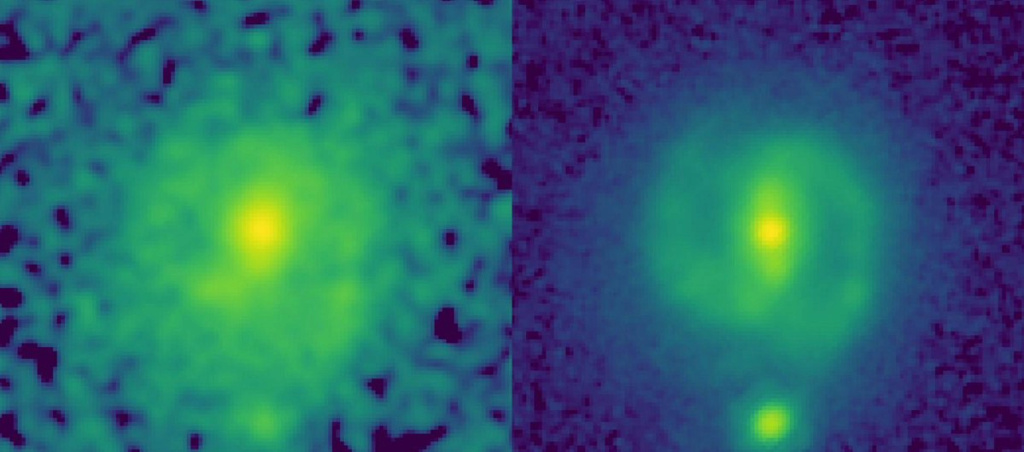James Webb captures images of galaxies 11 billion years old

James Webb has returned to service at the start of the year! Sometimes nicknamed “the archaeologist of space”, the space telescope has just captured an ancient galaxy several billion years old. For the curious and passionate about space images, this is where it happens!
You dreamed of seeing in the past? Here is a rather impressive image ! Indeed, the James Webb telescope has just provided us with an image of one of the oldest galaxies in our universe. This one is about 11 billion years old.
Galaxies similar to the Milky Way
Called EGS-23205, the highlighted system is a spiral galaxy split by a line of very distinct stars. These stellar bars are elongated structures filled with stars that extend from the center to the various outer disks. But even more surprisingly, this galaxy is not alone!
EGS-23205 is accompanied by its neighbor, EGS-2468, a spiral galaxy also split in two by a stellar bar . Both systems are thought to be around 11 billion years old . Close behind are four other galaxies, which are 8 million years old according to telescope data.
Better image quality than Hubble
"I looked at this data, and I said, 'We drop everything else!'" Shardha Jogee, professor of astronomy at the University of Texas at Austin, said in A press release.
He continues: " The barely visible stellar bars in the Hubble data simply popped up in view of James Webb's images, this shows the enormous power of the JWST to see the underlying structure of galaxies."
But then how is it that the JWST can see so far and so precisely into our universe? There are several reasons to consider. The technological quality of the telescope and its location in space in particular.

Infrared and orbit around the sun
Indeed, the James Webb has infrared technology incorporated into its camera allowing it to see further into the universe. The light turning red as it comes from a distant source, so this technology allows him to see even further into space in search of the first galaxies born after the Big Bang.
Its location plays a big role too. The JWST orbits the Sun 1.5 million kilometers from Earth, so the telescope is not affected by disturbances in the Earth's magnetic field like its Hubble predecessor. Indeed it is in orbit around our planet, which somewhat affects the quality of its images.
Source: websites

